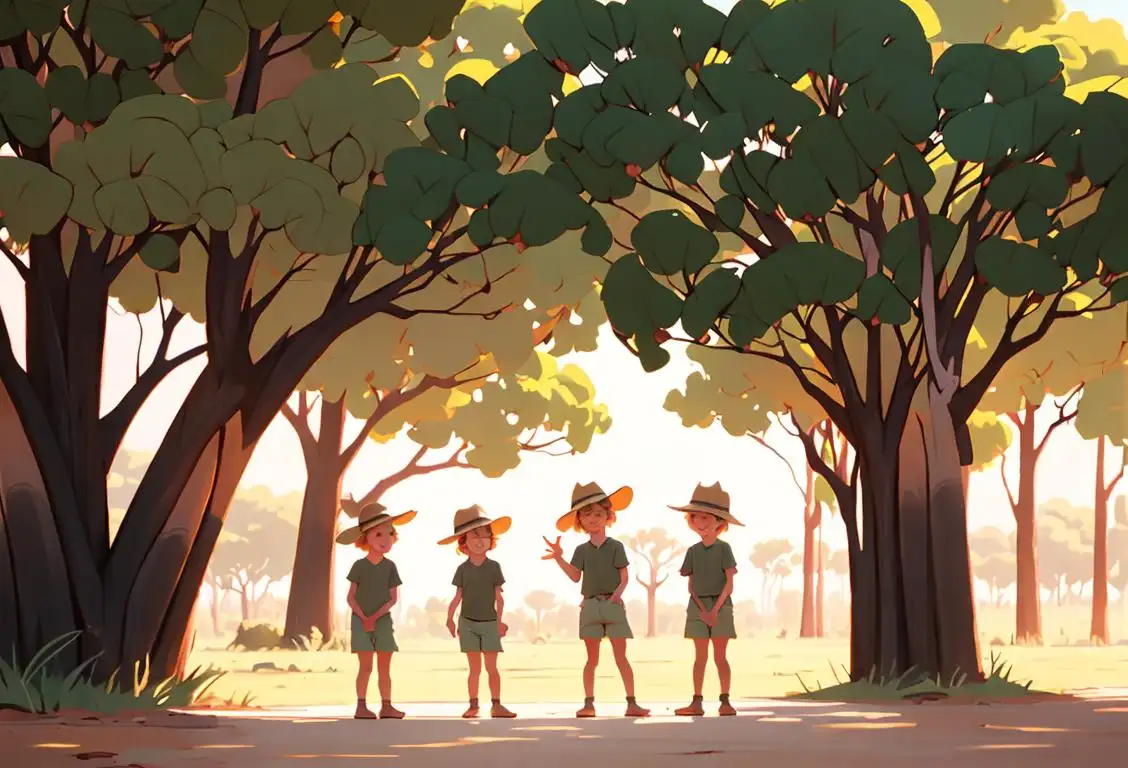National Kangaroo Day

Get ready to hop into a hopping good time because it's National Kangaroo Day! This quirky holiday celebrates those bouncy creatures that we all know and love. So let's dive into the history of this unique day and discover some fun facts along the way.
When is Kangaroo Day?
It's national kangaroo day on the 24th October.
The History of National Kangaroo Day
What started as a fun internet trend quickly gained momentum and led to the establishment of National Kangaroo Day. It all began on October 24, 2020, when social media exploded with adorable kangaroo photos, videos, and memes. People couldn't resist sharing their love for these fascinating marsupials, and before you knew it, National Kangaroo Day was born.
With their iconic hopping and pouch-carrying abilities, kangaroos have captured the hearts of people worldwide. These magnificent creatures are native to Australia, where they have become a national symbol. Kangaroos are known for their powerful hind legs, which allow them to hop at incredible speeds and cover vast distances.
On National Kangaroo Day, people come together to learn more about kangaroos, promote conservation efforts, and simply have fun celebrating these lovable creatures.
Did You Know?
Did you know that kangaroos are excellent swimmers? Despite their muscular hind legs being ideal for hopping on land, they can also swim when needed. So, not only are they fantastic hoppers, but they're also quite impressive swimmers. Talk about multi-talented!
History behind the term 'Kangaroo'
1770
Discovery by Captain Cook
In 1770, Captain James Cook and his crew set foot on the east coast of Australia during their exploration voyage. They encountered a peculiar animal resembling a large, hopping rat. Due to the lack of any previous knowledge or encounters with such a creature, Cook and his crew referred to it as 'kangooroo'.
1770
Captain Cook's Miscommunication
In 1770, during Captain James Cook's landmark voyage to Australia, his crew encountered some strange-looking animals hopping around. Cook and his crew attempted to ask the native Guugu Yimithirr people about the name of these animals. However, due to the language barrier, the crew misunderstood the response and thought the natives were saying 'kangaroo,' which they believed meant the name of the animal. Little did they know that 'kangaroo' actually meant 'I don't understand' in the Guugu Yimithirr language.
1795
First Recorded Use
The term 'kangaroo' made its first recorded appearance in a letter written in 1795 by British explorer George Shaw. Shaw described the animal as 'a large gregarious all-land animal,' giving it the name 'kangaroo.' This marked the official introduction of the term into the English language and set the stage for its continued usage.
1820
First Scientific Description
The first scientific description of kangaroos was made in 1820 by Belgian zoologist, Anselme Gaëtan Desmarest. He classified them as marsupials, distinguishing them from other mammals by their unique reproductive system, which involves carrying their undeveloped young, called joeys, in a pouch.
1840
Widespread Use of the Term
Throughout the 19th century, the term 'kangaroo' became universally accepted and used to refer to these distinctive hopping creatures. It entered popular usage and made its way into zoological literature and public discourse, shaping the global perception of these iconic animals.
1820
Scientific Classification by John Gould
In 1820, prominent ornithologist and naturalist John Gould presented a scientific classification of kangaroos for the first time. His work shed light on the unique characteristics and diversity of kangaroo species, helping distinguish them from other marsupials. As a result, the term 'kangaroo' became firmly associated with this particular group of animals, firmly establishing its place in scientific discourse.
1893
Creation of the Australian Kangaroo Industry
In 1893, the Australian government recognized the potential of kangaroo hides and meat as valuable economic resources. Subsequently, the kangaroo industry began to flourish with the establishment of commercial hunting and processing operations. This development further solidified the term 'kangaroo' as a significant part of Australian culture and economy.
1850
Etymological Origin
The exact origin of the word 'kangaroo' is still debated among linguists and etymologists. One theory suggests that it might have derived from the Guugu Yimithirr language spoken by Indigenous Australians. In this language, 'gangurru' means 'large black kangaroo'. Another theory suggests that it originated from a different Indigenous Australian language, meaning 'I don't understand'.
1974
The Red Kangaroo as Australia's National Emblem
In 1974, the red kangaroo (Macropus rufus) was officially declared as Australia's national emblem. This iconic species embodies the spirit of Australia and its unique wildlife. As a result, the term 'kangaroo' gained even greater cultural significance, representing the country's identity and becoming a symbol known worldwide.
Did you know?
Kangaroos are excellent swimmers!Tagged
awareness funFirst identified
23rd October 2020Most mentioned on
24th October 2020Total mentions
9Other days
Nurses Day
Former Prisoner Of War Recognition Day
Press Day
Handloom Day
Heroes Day
Memorial Day
Dance Day
Bestfriends Day
Liberation Day
Love Your Pet Day









